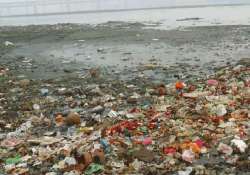NGT seeks more information about tanneries on Ganga banks before ruling
New Delhi: The National Green Tribunal on Thursday sought more clarification on key issues before deciding the fate of about 700 Kanpur-based tanneries on the banks of river Ganga, termed as "highest sources of pollution"

New Delhi: The National Green Tribunal on Thursday sought more clarification on key issues before deciding the fate of about 700 Kanpur-based tanneries on the banks of river Ganga, termed as "highest sources of pollution" in one of its earlier observations.
The bench, chaired by Justice (retd.) Swatanter Kumar, Thursday directed the Uttar Pradesh Jal Nigam Board, UP Pollution Control Board (UPCB), the Central Pollution Control Board (CPCB), tanneries' association, and the state government to flesh out details on the number of tannery industries in the cluster that surround the river.
Also sought was the current status of the total number of drains carrying sewage and effluents from these industries as well as the number of plants that treat this kind of waste before discharging it all into the river.
The bench demanded to know the capacity of the existing effluent treatment plants (ETPs) and the sewage treatment plants (STPs) and how much untreated waste was being discharged into the Ganga.
Details were also sought for the quantity of effluent being generated by the tanneries, and the average duration of power available to the existing STP and the common ETP, and whether there were any alternate arrangement in case of power cuts.
The NGT, hearing a plea filed by Krishan Kant Singh, had earlier directed the UPCB, the CPCB, the union environment and forest ministry, and the National Ganga River Basin Authority to inspect the tanneries and put together a report on an effective way to prevent and control pollution in the river from these industrial clusters. The bench reserved its ruling until Friday.